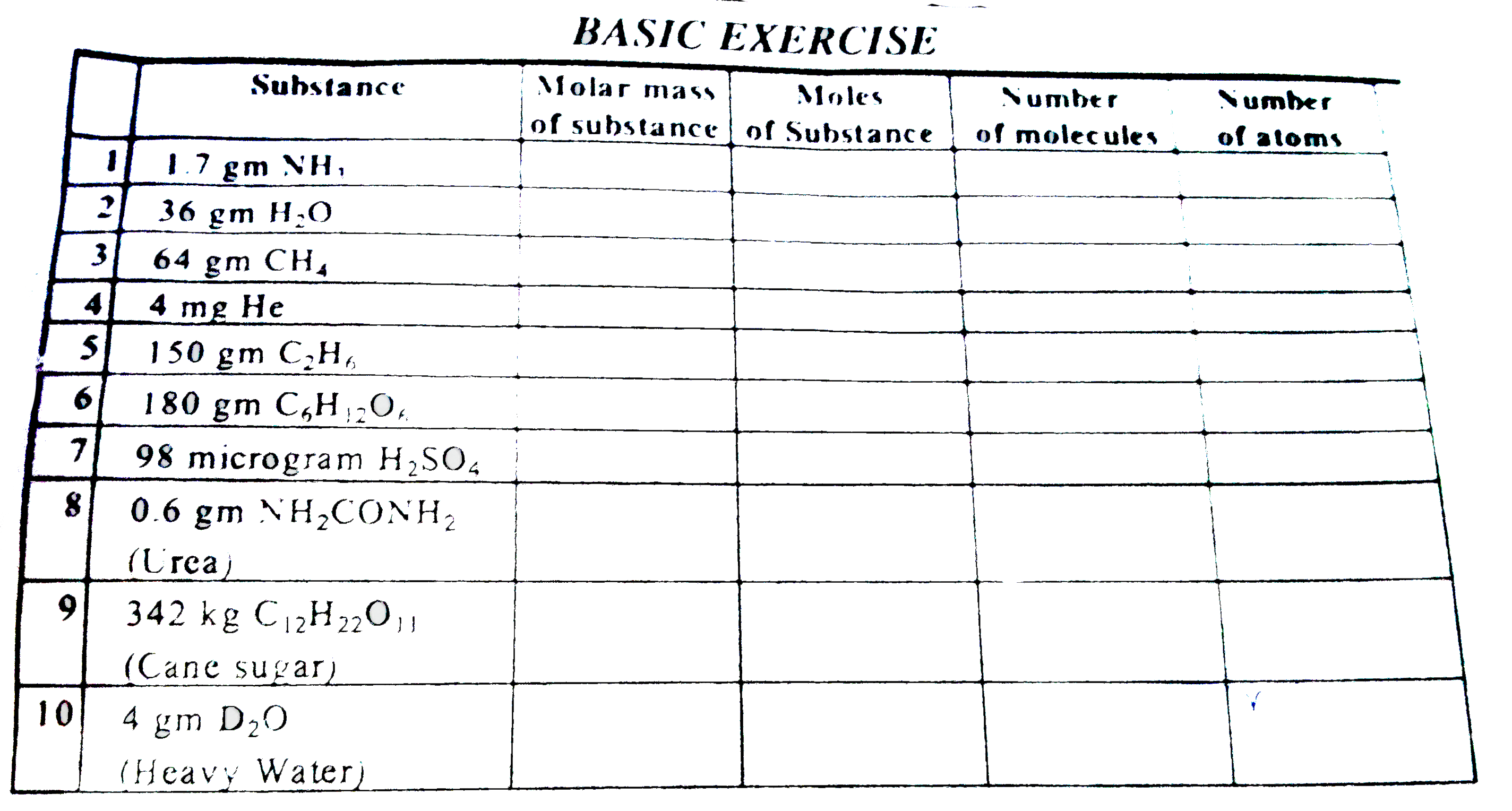Name the intermolecular forces between
To determine the intermolecular forces between the specified pairs of substances, we will analyze each case step by step.
Solution Steps:
1. (i) Cl₂ and CBr₄:
- Both Cl₂ (chlorine) and CBr₄ (carbon tetrabromide) are non-polar molecules.
- The intermolecular force present between non-polar molecules is London Dispersion Forces (also known as Van der Waals forces).
Answer: London Dispersion Forces
2. (ii) SiH₄ molecules:
- SiH₄ (silane) is also a non-polar molecule.
- Therefore, the intermolecular force present is again London Dispersion Forces.
Answer: London Dispersion Forces
3. (iii) He atoms in liquid He:
- Helium (He) is a noble gas and is non-polar.
- The intermolecular force present in liquid helium is also London Dispersion Forces.
Answer: London Dispersion Forces
4. (iv) HCl molecules in liquid HCl:
- HCl (hydrochloric acid) is a polar molecule.
- The intermolecular force present between HCl molecules is Dipole-Dipole Interactions.
Answer: Dipole-Dipole Interactions
5. (v) He and a polar molecule:
- Helium is non-polar, and when it interacts with a polar molecule, it induces a dipole in the helium atom.
- The intermolecular force present here is Dipole-Induced Dipole Interaction.
Answer: Dipole-Induced Dipole Interaction
6. (vi) Water molecules:
- Water (H₂O) is a polar molecule.
- The intermolecular forces present between water molecules are Hydrogen Bonds, which are a strong type of dipole-dipole interaction.
Answer: Hydrogen Bonds
Summary of Answers:
1. Cl₂ and CBr₄: London Dispersion Forces
2. SiH₄: London Dispersion Forces
3. He atoms in liquid He: London Dispersion Forces
4. HCl molecules in liquid HCl: Dipole-Dipole Interactions
5. He and a polar molecule: Dipole-Induced Dipole Interaction
6. Water molecules: Hydrogen Bonds
- Both Cl₂ (chlorine) and CBr₄ (carbon tetrabromide) are non-polar molecules.
- The intermolecular force present between non-polar molecules is London Dispersion Forces (also known as Van der Waals forces).
Answer: London Dispersion Forces
- SiH₄ (silane) is also a non-polar molecule.
- Therefore, the intermolecular force present is again London Dispersion Forces.
Answer: London Dispersion Forces
- Helium (He) is a noble gas and is non-polar.
- The intermolecular force present in liquid helium is also London Dispersion Forces.
Answer: London Dispersion Forces
- HCl (hydrochloric acid) is a polar molecule.
- The intermolecular force present between HCl molecules is Dipole-Dipole Interactions.
Answer: Dipole-Dipole Interactions
- Helium is non-polar, and when it interacts with a polar molecule, it induces a dipole in the helium atom.
- The intermolecular force present here is Dipole-Induced Dipole Interaction.
Answer: Dipole-Induced Dipole Interaction
- Water (H₂O) is a polar molecule.
- The intermolecular forces present between water molecules are Hydrogen Bonds, which are a strong type of dipole-dipole interaction.
Answer: Hydrogen Bonds
1. Cl₂ and CBr₄: London Dispersion Forces
2. SiH₄: London Dispersion Forces
3. He atoms in liquid He: London Dispersion Forces
4. HCl molecules in liquid HCl: Dipole-Dipole Interactions
5. He and a polar molecule: Dipole-Induced Dipole Interaction
6. Water molecules: Hydrogen Bonds
Topper's Solved these Questions
- STATES OF MATTER : GASES AND LIQUIDSBook:MODERN PUBLICATIONChapter:STATES OF MATTER : GASES AND LIQUIDSExercise:NCERT FILE (NCERT)(Textbook Exercises)
Explore 23 Videos
- STATES OF MATTER : GASES AND LIQUIDSBook:MODERN PUBLICATIONChapter:STATES OF MATTER : GASES AND LIQUIDSExercise:NCERT FILE NCERT (EXemplar Problems) (Multiple Choice Questions (Type-I))
Explore 24 Videos
- STATES OF MATTER : GASES AND LIQUIDSBook:MODERN PUBLICATIONChapter:STATES OF MATTER : GASES AND LIQUIDSExercise:Conceptual Questions (1)
Explore 17 Videos
- SOME BASIC CONCEPTS OF CHEMISTRY Book:MODERN PUBLICATIONChapter:SOME BASIC CONCEPTS OF CHEMISTRY Exercise:COMPETITION FILE (INTEGER TYPE AND NUMERICAL VALUE TYPE QUESTIONS)
Explore 10 Videos
- STRUCTURE OF ATOMBook:MODERN PUBLICATIONChapter:STRUCTURE OF ATOMExercise:Unit Practice Test
Explore 13 Videos
Similar Questions
Knowledge Check
When ethanol mixes in cyclohexane, cyclohexane reduces the intermolecular forces between ethanol molecule. In this, liquid pair shows
APositive deviation by Raoult's lawBNegative deviation by Raoult's lawCNo deviation by Raoult's lawDDecrease in volumeIf the intermolecular forces vanish away the volume occupied by the molecules contained in 4.5kg water at STP will be .
A5.6m3B4.5m3C11.2litreD11,2m3Assertion (A): H2O a liquid and H2S a gas.
Reason (R): Water molecules are held by H-bonds while in H2S molecules no such interactions are present between molecules.ABoth A and R are true and R is the correct explanation of ABBoth A and R are true but R is NOT the correct explanation of ACA is true but R is falseDA is false and R is True.
Which type of intermolecular forces exist among the following molecules ?
(i) H2S molecules
(ii) H2O molecules
(iii) CL2 and CCl4 molecules
(iv) SiH4 molecules
(v) Helium atomms
(vi) He atoms HCl molecules
View SolutionWhich type of intermolecular forces exist among the following molecules?
(a) He atoms and HCl molecules (b) HF molecules (c) N2 molecules (d) HCl molecules
View SolutionHow many atoms are present in a
(i) H2S molecule and
(ii) PO3–4 ion?
View SolutionHow many atoms are present in a
(i) H2S molecule and
(ii) PO3−4 ion?
View Solution
6.4 gm of SO2 will contain how many
(i) Moles of SO2 molecules
(ii) Number of SO2 molecules
View Solution

